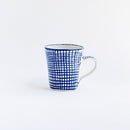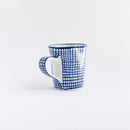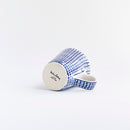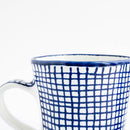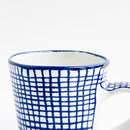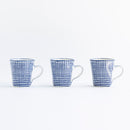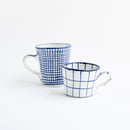
[About the product]
Marianne Harberg x Seto Yaki
Five major works of Marianne Harberg are released simultaneously in collaboration with Seto ware after six years of trial and error! Her original work is attractive because of the hand -drawn line, and a slightly distorted molding and thinness. However, it was also true that I couldn't make a lot at once because of the handmade, and I couldn't deliver it widely to everyone. Therefore, this time, Tonkachi and Marianne are looking for mass production after leaving the original goodness as much as possible, and the pottery of Seto -yaki, Aichi Prefecture, has continued since the Taisho era. This is the Seto -yaki version "Mesh Cup (SETO)" of Marianne's masterpiece "Mesh Cup". She's a favorite check pattern, with fine eyes. Her popular works have become easier to deliver at hand. At the bottom is the engraving of "TONKACHI / MADE IN JAPAN".
[About Marianne's Seto ware collaboration]
Under the supervision of Marianne himself, a product that has been completed by reviewing the manufacturing process from Zero with the Seto -ya Kodo workshop in Japan so that she can provide affordable prices and durability while leaving her original goodness as much as possible. The pottery, which is the ideal partner with Marianne, is one of the potters that represents Seto -yaki, which has continued since the Taisho era.
[Design]
Her unique blue called Marianne Blue. The blue bleeding and the texture of the pottery are delicately reproduced in Seto ware, and it is a finished product only with Japanese traditional technologies. The original "mesh cup" is about 3mm thick, whereas the Seto -yaki version is about 4mm thick. With a slight thickness, the weight was about 60g plus, and the durability was improved. A general size with a capacity of about 250 ml as the original. It is wonderful to use it in the washroom.


[Comment from the staff]
We call this pattern drawn by Marianne "mesh", but this is just a detailed check pattern for her, and it's still her favorite plaid. With this Seto ware collaboration, it became easier to afford and the durability was improved, so even for visitors. It is the charm of Marianne's work, which is mysterious and neat.
[About Seto ware]
Traditional porcelain with Seto City, Aichi Prefecture. For a long time, it has been used in people's lives and has been incorporated into various vessels and pottery. As it has been exported abroad, it is widely known as a typical traditional crafts that send the appeal of "MADE IN JAPAN" to the world.







